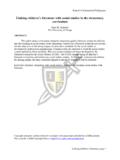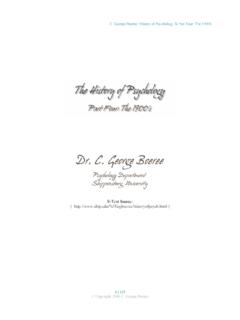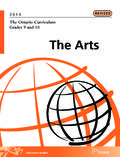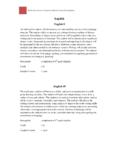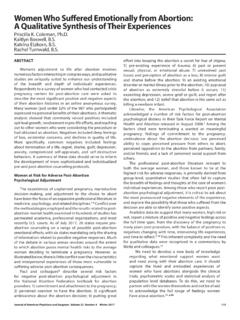Transcription of The Place of Social Capital in Understanding Social …
1 The Place of Social Capital in UnderstandingSocial and Economic OutcomesMichael Woolcock1It is hardly possible to overrate the placing human beings in contact withpersons dissimilar to themselves, and with modes of thought and action unlike thosewith which they are Such communication has always been, and ispeculiarly in the present age, one of the primary sources of Stuart MillThis paper provides a brief introduction to the recent theoretical and empirical literatureon Social Capital as it pertains to economic development issues, with a particular focus on itssignificance for OECD countries. In so doing it seeks to address three specific questions: (1)How are Social Capital , human Capital , and Social capability related to one another?
2 ; (2) How cansocial Capital be measured?; and (3) How might existing economic growth models give moreadequate attention to Social Capital ?The paper proceeds as follows. I begin by examining the remarkable resurgence ofinterest in the Social dimensions of development in general, and the idea of Social Capital inparticular. This is followed by a basic primer on Social Capital and a brief survey of the empiricalevidence in support of key hypotheses pertaining to economic development, especially therelationship between informal and formal institutions and their collective capacity to managerisk. Next, I provide a response to several of the criticisms leveled at Social Capital .
3 I thenexplore the implications of a general theory of Social Capital for economic growth and well-being 1 Development Research Group, The World Bank, and Kennedy School of Government, Harvard University. This paper draws on Woolcock (2000) and Woolcock and Narayan (2000). Mythanks to Thomas Healy and Sylvain Cote for comments on an earlier draft. The views expressed in this paperare entirely those of the author, and should not be attributed to the World Bank, its executive directors, or thecountries they OECD countries. I conclude by calling for a renewed commitment to interdisciplinary andmulti-method research on development issues, for keeping debates on Social Capital focused onthe evidence, and for an appreciation that even a relatively parsimonious conceptualization ofsocial Capital has a range of important implications for practitioners and policymakers seeking tocultivate a more productive and inclusive The Decline and Rise of the Social Dimensions of DevelopmentIn the last decade, there has been a resurgence of interest in the Social and institutionaldimensions of economic development (World Bank 1997.)
4 2000a). Work in this field waspioneered by Hirschman (1958) and Adelman and Morris (1967), but in general the issues theyhad raised so poignantly were crowded out until the late 1980s. During the 1970s and 1980s,Cold War rhetoric and ideological dichotomies (state planning versus free markets) dominateddevelopment discourse in First and Second World countries, while elites in the Third World (andmany of their western scholarly counterparts) tended to blame forces beyond their borders forpoor domestic For more than forty years, then, the role of national and localinstitutions political, legal, and Social were largely A number of geo-politicalfactors contributed to the turnaround in the 1990s, most prominent among them being the fall ofcommunism, the ostensible difficulties of creating market institutions in transitional economies,the financial crises in Mexico, East Asia, Russia, and Brazil, and the enduring scourge of povertyin even the most prosperous economies.
5 Meanwhile, policymakers, foreign investors, and aidagencies alike finally began to recognize that corruption, far from greasing the wheels in weak 2 To be sure, the power of wealthy nations, corporations, and individuals to exert a disproportionate degree ofinfluence in developing countries remains an important issue, but in the 1960s, 1970s, and 1980s the myopicfocus by dependency theorists on these external forces trumped most serious efforts to examine internalconditions. Modernization theorists raised some of these concerns, but largely in unhelpful ways, national or ethnic cultural traits or levels of achievement motivation, which they believed werereflected in patterns and degrees of development.
6 For a review of the more recent literature on culture anddevelopment, see Alkire, Rao, and Woolcock (2000).3 Even today, it is the rare development economics textbook that contains a single index entry for institutions , communities, or even corruption. Governments, where discussed at all, are usually portrayed as rent-seeking and/or price distorting entities capable of few positive or proactive contributions to society other thanthe provision or protection of essential public environments, was in fact imposing serious and measurable net costs (World Bank1998). Faced with the glaring evidence that orthodox theories had neither anticipated thesedifficulties nor offered safe passage through them once encountered, attention returned to thesocial and institutional was the demand side of the story.
7 On the supply side, a remarkable series ofpublications combined to give Social scientists greater confidence to address these long-neglectedthemes. In economics, Nobel laureate Douglass North (1990) argued that formal and informalinstitutions (the legal structures and normative rules of the game ) were crucial to understandingeconomic In political science, Robert Putnam (1993) showed that the density andscope of local civic associations laid the foundations for the widespread dissemination ofinformation and Social trust, thereby creating the conditions underpinning effective governanceand economic development (see also Fukuyama 1995).
8 5 In sociology, Peter Evans (1992, 1995)demonstrated that whether a state was developmental or predatory was crucially dependenton both the capacity of its public institutions and the nature of state-society By the late1990s, the development literature on institutional capacity, Social networks, and communityparticipation inspired by these works began to coalesce around a general framework loosely heldtogether by the idea of Social Capital . 72. What is Social Capital ? How does if differ from human Capital and Social capability? It s not what you know, it s who you know. This common aphorism sums up much ofthe conventional wisdom regarding Social Capital .
9 It is wisdom born of our experience that 4 The pioneering work of Joseph Stiglitz, Amartya Sen, and Mancur Olson on (respectively) incomplete information,human development, and institutional rigidities was also influential (see, only most recently, Stiglitz 1998, Sen1999, and Olson 2000).5 Elinor Ostrom (1990) and Norman Uphoff (1992) also made influential contributions through their work on theimportance of Social relations to the maintenance of common property resources (especially the management ofwatersheds in developing countries).6 For comparable innovative work in anthropology, see Singerman (1995) and Ensminger (1996).
10 3gaining membership to exclusive clubs requires inside contacts, that close competitions for jobsand contracts are usually won by those with friends in high places. When we fall upon hardtimes, we know it is our friends and family who constitute the final safety net. Conscientiousparents devote hours of time to the school board and to helping their kids with homework, onlytoo aware that a child s intelligence and motivation are not enough to ensure a bright instrumentally, some of our happiest and most rewarding hours are spent talking withneighbors, sharing meals with friends, participating in religious gatherings, and volunteering oncommunity , then, the basic idea of Social Capital is that one s family, friends, andassociates constitute an important asset, one that can be called upon in a crisis, enjoyed for itsown sake, and/or leveraged for material gain.











